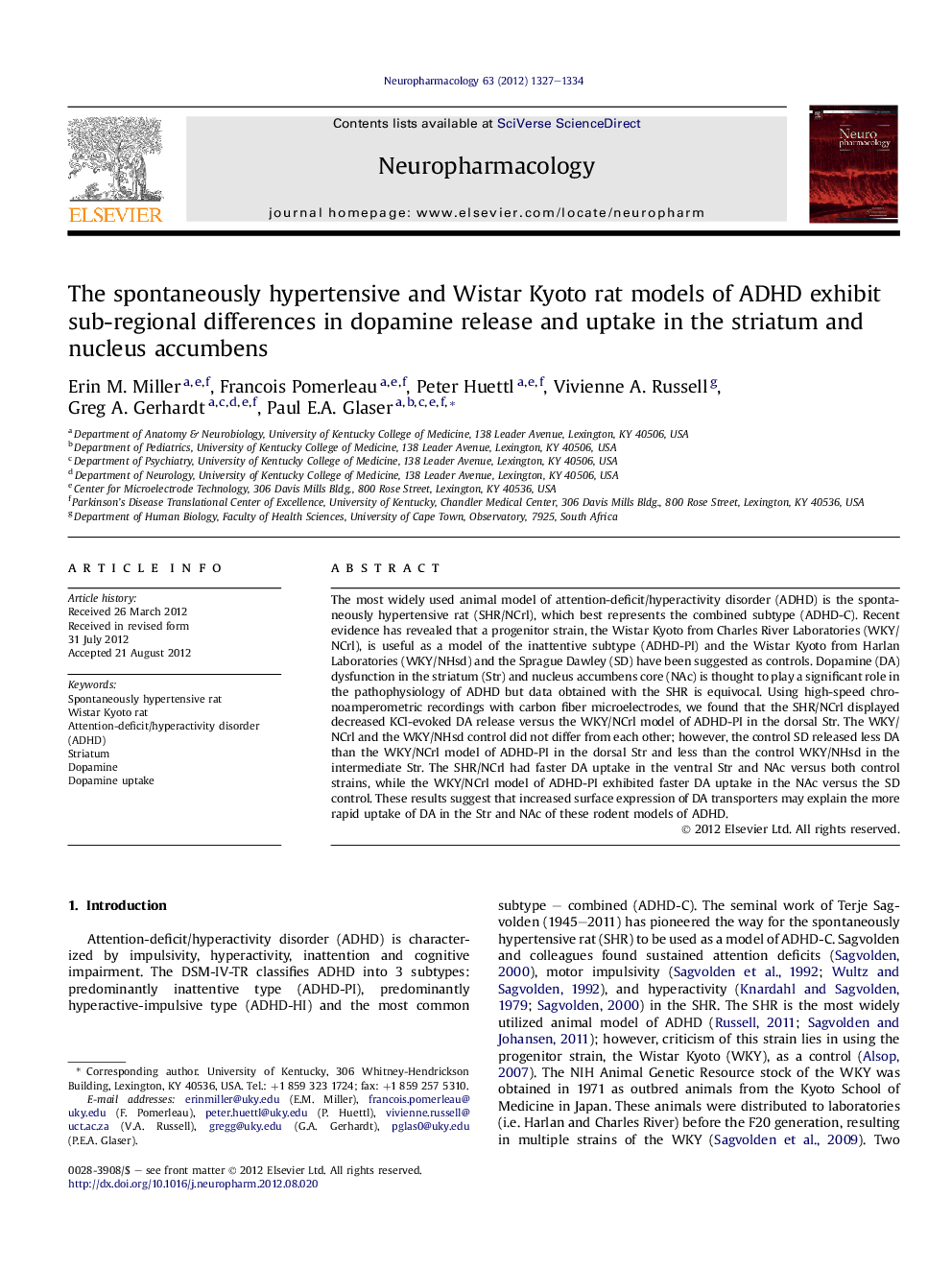| Article ID | Journal | Published Year | Pages | File Type |
|---|---|---|---|---|
| 2493566 | Neuropharmacology | 2012 | 8 Pages |
The most widely used animal model of attention-deficit/hyperactivity disorder (ADHD) is the spontaneously hypertensive rat (SHR/NCrl), which best represents the combined subtype (ADHD-C). Recent evidence has revealed that a progenitor strain, the Wistar Kyoto from Charles River Laboratories (WKY/NCrl), is useful as a model of the inattentive subtype (ADHD-PI) and the Wistar Kyoto from Harlan Laboratories (WKY/NHsd) and the Sprague Dawley (SD) have been suggested as controls. Dopamine (DA) dysfunction in the striatum (Str) and nucleus accumbens core (NAc) is thought to play a significant role in the pathophysiology of ADHD but data obtained with the SHR is equivocal. Using high-speed chronoamperometric recordings with carbon fiber microelectrodes, we found that the SHR/NCrl displayed decreased KCl-evoked DA release versus the WKY/NCrl model of ADHD-PI in the dorsal Str. The WKY/NCrl and the WKY/NHsd control did not differ from each other; however, the control SD released less DA than the WKY/NCrl model of ADHD-PI in the dorsal Str and less than the control WKY/NHsd in the intermediate Str. The SHR/NCrl had faster DA uptake in the ventral Str and NAc versus both control strains, while the WKY/NCrl model of ADHD-PI exhibited faster DA uptake in the NAc versus the SD control. These results suggest that increased surface expression of DA transporters may explain the more rapid uptake of DA in the Str and NAc of these rodent models of ADHD.
► Differences in dopamine release exist between ADHD models in dorsal striatum. ► Dopamine uptake differences between ADHD-C model and controls in ventral striatum. ► Dopamine uptake differences between ADHD models and controls in nucleus accumbens.
